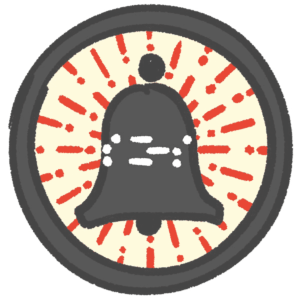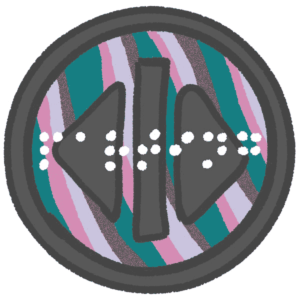Going down, first floor, going up, fourth floor. Going down, first floor, going up, fourth floor. The lifeless voice of a female computer echoes in the dark, cold hallway, and every time the door to the metallic box opens, it contains humans. It’s 2am, no one’s here, and the restless box which carries my dear friend up and down until morning, does this exact same linear motion over and over again as his OCD would not let him sleep until his brain was satisfied with the elevator rides. I often wonder what he felt when he was on the elevator — was it a comfort? Or was it a fear that he’d never be able to get off? I, personally, am always scared of an elevator. It feels suffocating, and there is the bizarre feeling that it’s sending me to unknown purgatory. To some people, it could also be a social space for strangers without the boundaries of their social titles — a place for ships passing in the night. Or, pure torture with the awkward silence of coexisting within intimate distance of strangers. Elevator Music, a work of art by Ketty Zhang, explores this psychology of the elevator. It is a visualization of multiple meanings that people have seen through this mere box of metals.

Ketty Zhang is a Vancouver-based artist who graduated from UBC with a BA double major in Visual Art and Art History, and her works have been exhibited throughout Vancouver, such as at Slice of Life. Her most recent solo exhibition, Elevator Music, was exhibited in a showroom of TAS (The Art Shop) located within VMF’s City Centre Artist Lodge. It contains several subseries of paintings and one series of photography, and this work represents Ketty’s interest in the intersectionality of an elevator: mundaneness, change, transience, and corporate culture, all residing within each other.
Smoke is one of the pieces from a subseries of the paintings which features objects from Ketty’s elevator experiences. These paintings have a metallic-looking silver background, and the subjects are drawn mainly using monotones, except a deep red color, which characterizes something uniquely intimidating. It gives the viewer the bizarre feeling that these drawn objects are monsters inhabiting a world where only metallic inorganics exist. Smoke especially caught my eye, as it featured a human mouth with smoke coming out of it, which appeared to have no connection to an elevator. The deep red lip colour, in contrast to the pure white teeth, vividly claims their existence despite the smoke which blurs parts of the mouth. This smoke exists in Ketty’s memory in a way that nicotine addicts can relate to — she once hit a vape in the smoke prohibited elevator of her apartment, desperately reaching for the nicotine, only to encounter an anti-smoking poster the next day. It’s a reminder that the elevator is a place where your actions are most exposed to audiences through the small black ball in the corner of the space, namely a surveillance camera. Although it seems to be isolated, a space where no one is there to judge you for sipping the juice of forbidden fruit as a brief escape, where they can be alone and hide, it is not. Smoke doesn’t just tell the story of a funny, relatable and mundane moment, but it could also be about the feeling of surveillance. The presence of the mouth and smoke, all in silver paint, seems to be emphasizing that the act of smoking is being watched and judged.

Another painting from the same subseries is called, In Case of Fire. Three deep red, fire-shaped objects are floating in the silvery world again, which almost look like — at least my first impression was — the tips of squids’ tentacles. Each of them has one eye on its flare, Ketty’s creation of another monster in the metallic elevator universe. Although this painting remained strongly in my mind, I could not make sense of them — that is, until I saw the “In Case of Fire” sign while waiting for an elevator the other day. The goosebumps my body felt when I caught the same fire-looking tentacles quietly sitting next to the call button. Instead of the eyes, there were circles on the tip, complete with an illustration of people walking down the stairs in one circle, and X’s over elevator in the other two —visually cautioning us not to use elevators when fire happens. One of my own elevator memories was invoked by this painting, and the sign itself, back during my first year of university life, when I had to evacuate my dorm due to a repeat of a false fire alarm. At a certain point, you stop believing the validity of the fire, and someone like me, who lived on the 20th floor, desperately wanted to use the elevator instead of the stairs. This work seems satirical to me, as if the eyes of the fire tentacle monsters are a reminder of surveillance, catching anyone who dares to use it during an evacuation — and how that is what I cared about the most when there was a possible danger to my life.

Another subseries consists of three small paintings. They all depicted women taking mirror selfies. The thick black lines which visibly divide the paintings symbolize the division between the walls of elevators — all made of mirrors. Then, you might guess that they are supposed to be selfies taken in the elevators, which raises a question about one of the pieces, Sudan. Her body seems to be laying down somewhere and is in clothes that look almost like underwear, making her selfie very intimate, a bit too much for an elevator. The truth is — these pieces are made from the artist’s active selection of selfies she found on Instagram — which she then drew onto elevator mirrors. The choice of this intimate selfie might talk about the forced intimacy with strangers in an elevator, isolating anyone in this small square, one in which you cannot get off until it reaches a designated floor.
The elevator is such a mundane object, one that anyone, anywhere, may use almost every day, and yet, this small space transcends other spaces in our day-to-day lives as a limbo which confines your existence. It is isolated, but exposed — intimate, but awkward. Through Ketty’s eyes, “Elevator Music” shows that people’s deepest psyche can be called upon in this space, like my friend’s anxious mind throughout the night, making you reach for a forbidden act, or tempting you to skip the safe stairs amid danger, all while judging you with its rules and surveillance.



